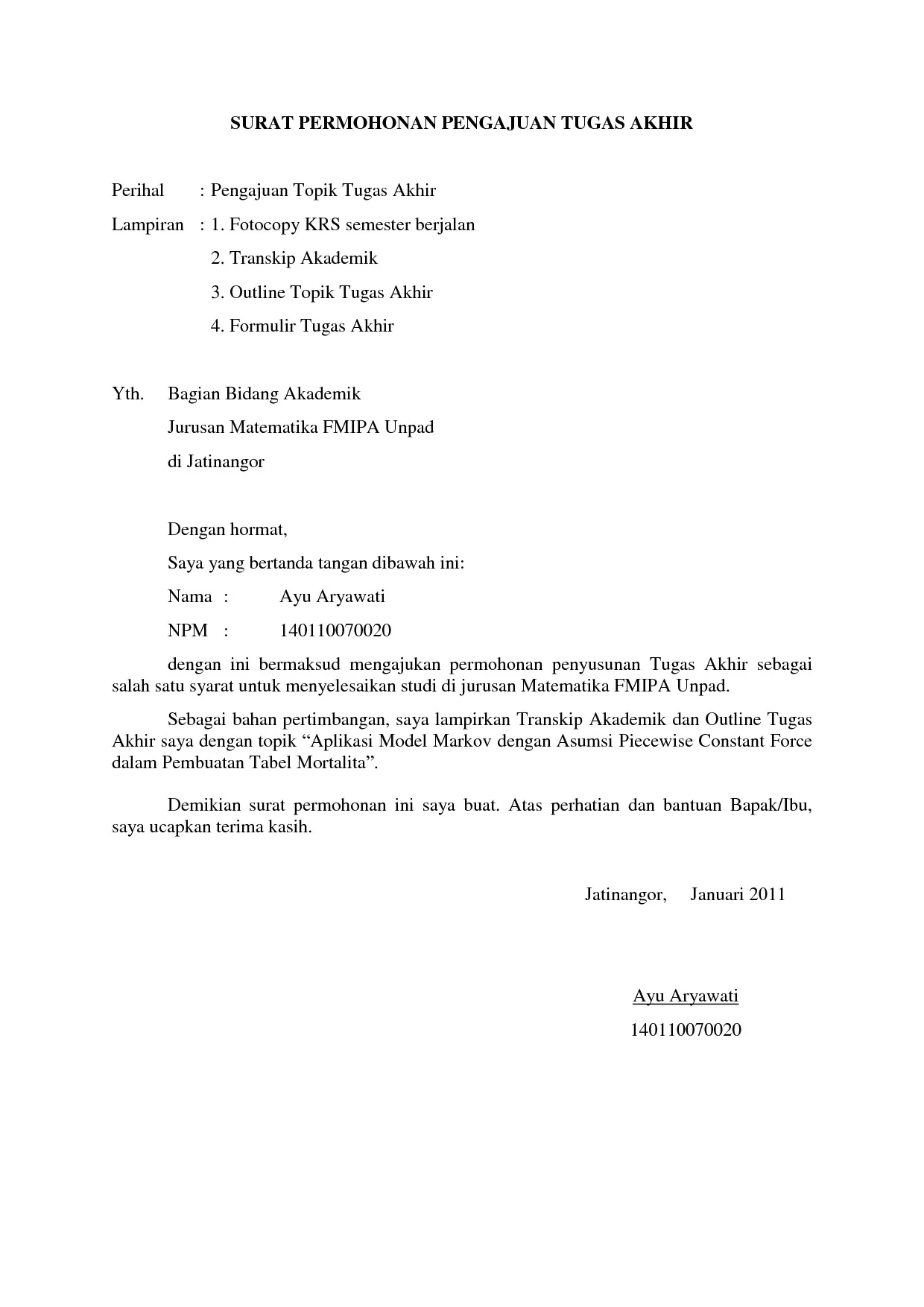Cover Letter: Top 7 Tips for Success
A cover letter is your chance to make a strong first impression. It’s more than just a formality; it’s a powerful tool to showcase your personality, skills, and enthusiasm for the job. A compelling cover letter can significantly increase your chances of landing an interview. This guide provides the top 7 essential tips to help you write a cover letter that stands out and gets you noticed. By following these tips, you can craft a cover letter that effectively communicates your value and increases your chances of success in your job search.
Research the Company
Before you start writing, thoroughly research the company and the specific role you are applying for. Understanding the company’s mission, values, and recent achievements allows you to tailor your letter to demonstrate how your skills align with their needs. Visit their website, read their ‘About Us’ section, and explore their social media profiles. Identify key projects, recent news, and any information that can help you personalize your letter. Showing that you’ve taken the time to understand their business demonstrates genuine interest and a proactive approach. This effort shows that you are serious about the position and have a good understanding of the company’s goals. A well-researched cover letter is a significant advantage.
Tailor Your Letter
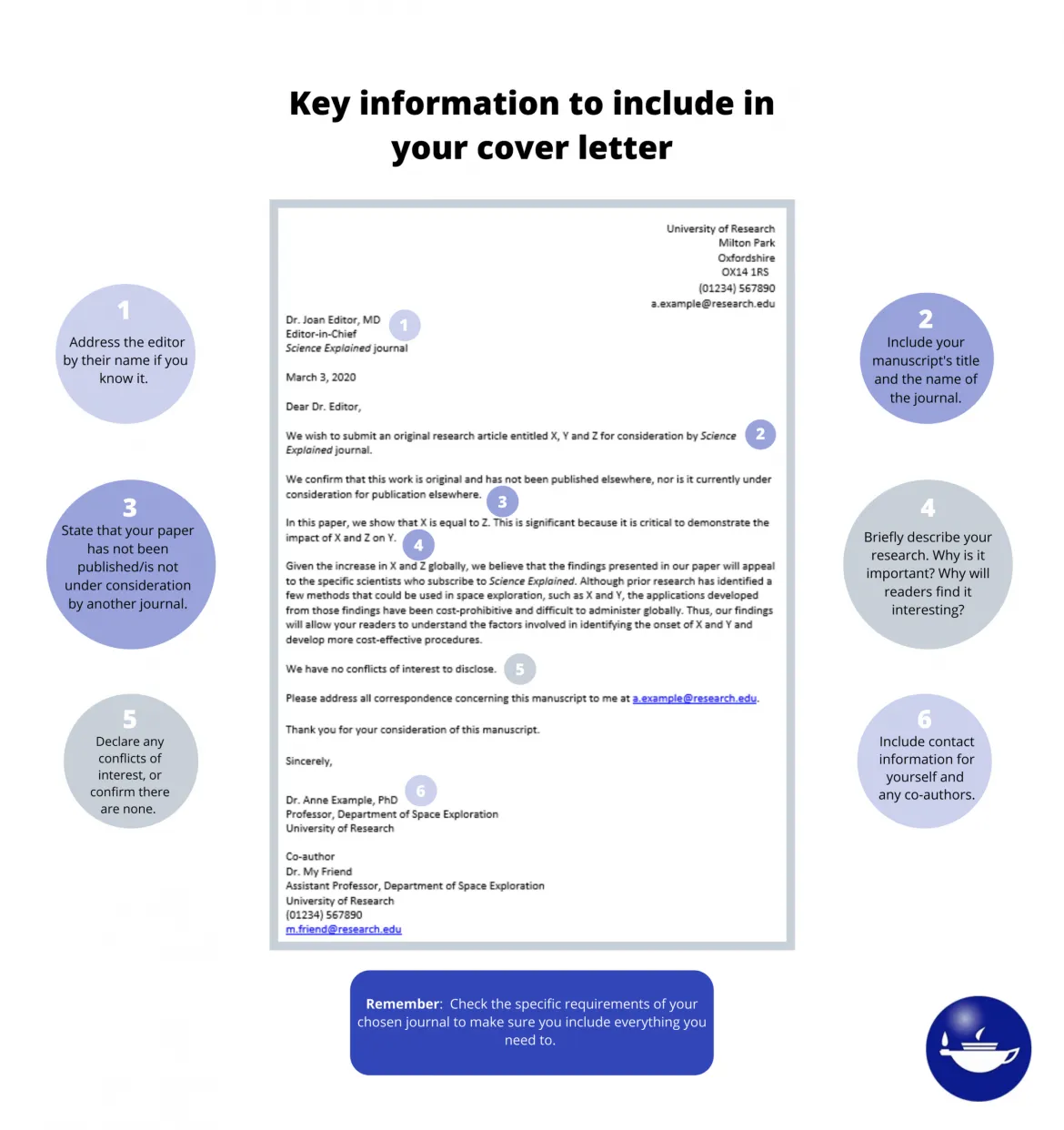
Never use a generic cover letter. Each cover letter should be customized for the specific job and company. Review the job description carefully and identify the key requirements and desired skills. Use the language from the job posting and directly address how your experience and qualifications meet these needs. Avoid the temptation to send out the same letter for every application. This shows a lack of attention to detail and can quickly disqualify your application. Instead, take the time to personalize each letter, highlighting the aspects of your background that are most relevant to the position and the company’s needs. Tailoring your letter increases the likelihood that you will get noticed and invited for an interview.
Highlight Relevant Skills and Experience
Focus on the skills and experiences that are most pertinent to the job. Use specific examples to illustrate your abilities and achievements. Don’t just list your responsibilities; instead, describe how you have applied your skills to achieve results. Include quantifiable achievements whenever possible, such as increasing sales, improving efficiency, or managing a project successfully. This approach provides concrete evidence of your capabilities. Ensure that the skills you highlight directly align with the requirements outlined in the job description. This way, you clearly demonstrate that you are a strong candidate for the role. This is especially important, so make sure you do some investigation to know what the employer is looking for.
Showcase Your Personality
While professionalism is important, also let your personality shine through. A cover letter is an opportunity to give the employer a glimpse of who you are. Use a professional yet approachable tone and let your enthusiasm for the job and the company show. Injecting your personality can help you stand out from other applicants and make your letter more memorable. Share a brief anecdote or a personal touch that illustrates your values or work ethic. This can create a connection with the reader and make them more interested in getting to know you. The key is to strike the right balance between professionalism and individuality. It is all about the impression you give to the potential employer, that will reflect on the company.
Use a Professional Tone
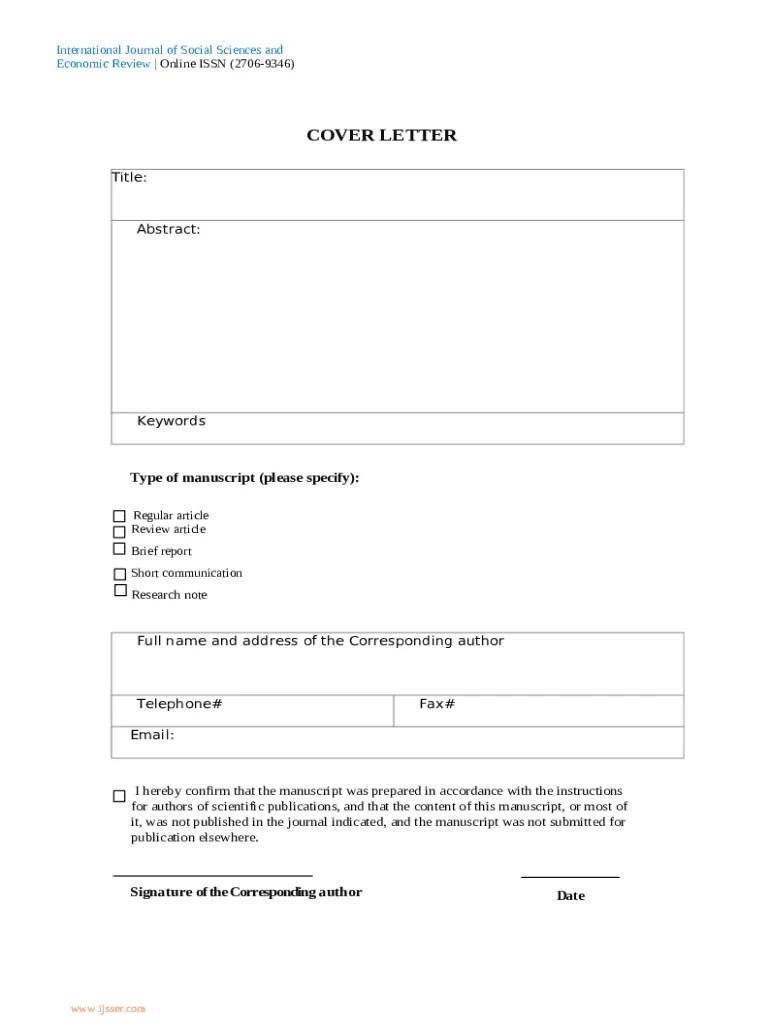
Maintain a professional tone throughout your cover letter. Avoid slang, jargon, and overly casual language. Use formal salutations and closings, such as “Dear [Hiring Manager Name]” and “Sincerely.” Ensure your writing is clear, concise, and free of grammatical errors. Use a polite and respectful approach, emphasizing your interest in the position and the company. Proofread your letter carefully to ensure there are no typos or mistakes that could detract from your professionalism. This shows your attention to detail and your commitment to presenting yourself in the best possible light. Your tone sets the foundation of your overall professional persona.
Proofread Carefully
Proofreading is one of the most crucial steps in the cover letter writing process. Always thoroughly proofread your letter for any errors in grammar, spelling, punctuation, and formatting. Typos and grammatical errors can create a negative impression and suggest a lack of attention to detail. It’s also helpful to have someone else proofread your letter. A fresh pair of eyes can often catch mistakes that you might have missed. Consider reading your letter aloud to help identify awkward phrasing or areas that need improvement. A well-proofread cover letter demonstrates your professionalism and increases your chances of making a positive impression. It is essential for your image as a potential employee.
Keep it Concise
Keep your cover letter concise and to the point. Aim for one page in length, typically around 250-400 words. Focus on the most relevant information and avoid unnecessary details. Get straight to the point and highlight your key qualifications and why you are a good fit for the role. Hiring managers are busy, so they appreciate a letter that gets straight to the point. Your goal is to provide enough information to pique their interest and encourage them to read your resume. Use clear and concise language, avoiding jargon or overly complex sentences. A well-written, concise cover letter shows that you respect the hiring manager’s time.
Structure of a Cover Letter
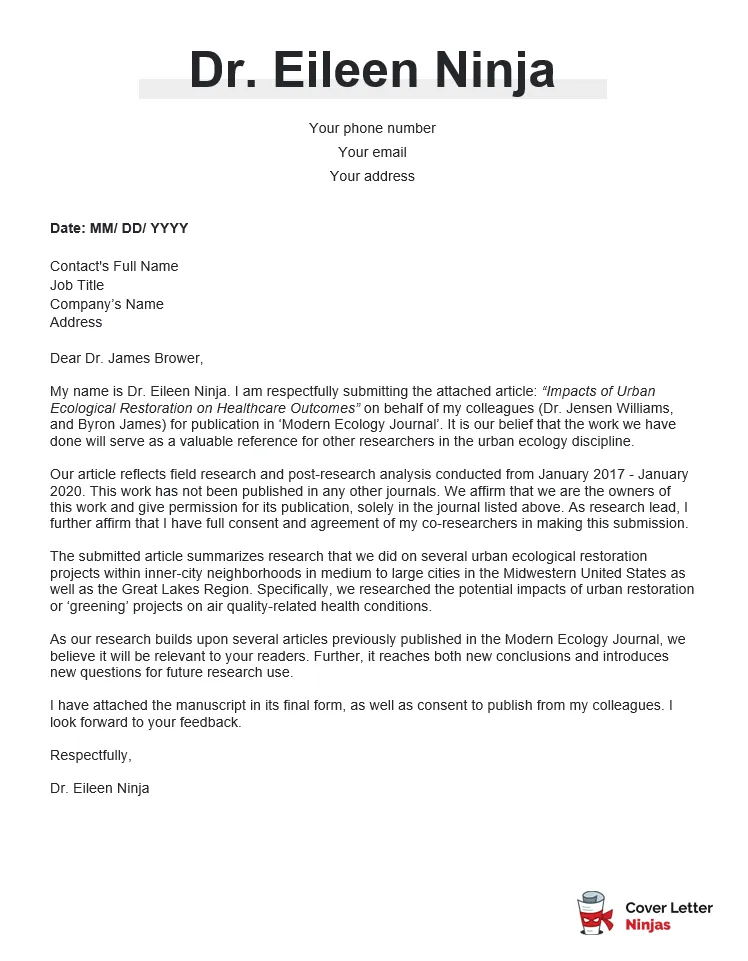
Header and Contact Information
The header should include your name, address, phone number, and email address. You can also include the date and the hiring manager’s name and address (if you know it). Ensure your contact information is accurate and up-to-date. This makes it easy for the employer to contact you. Consider using a professional-looking font and layout for the header to create a clean and organized appearance. Your contact information is the most important part, as it contains the necessary contact details.
Greeting
Use a professional greeting to begin your cover letter. If you know the hiring manager’s name, use it. For example, “Dear Mr. Smith.” If you don’t know the name, you can use “Dear Hiring Manager” or “Dear [Company Name] Hiring Team.” Avoid generic greetings such as “To Whom It May Concern” as they can seem impersonal. Personalizing the greeting shows that you have taken the time to research the company and the role. It will also enhance the overall quality of your letter. Make sure the salutation matches your overall approach.
Opening Paragraph
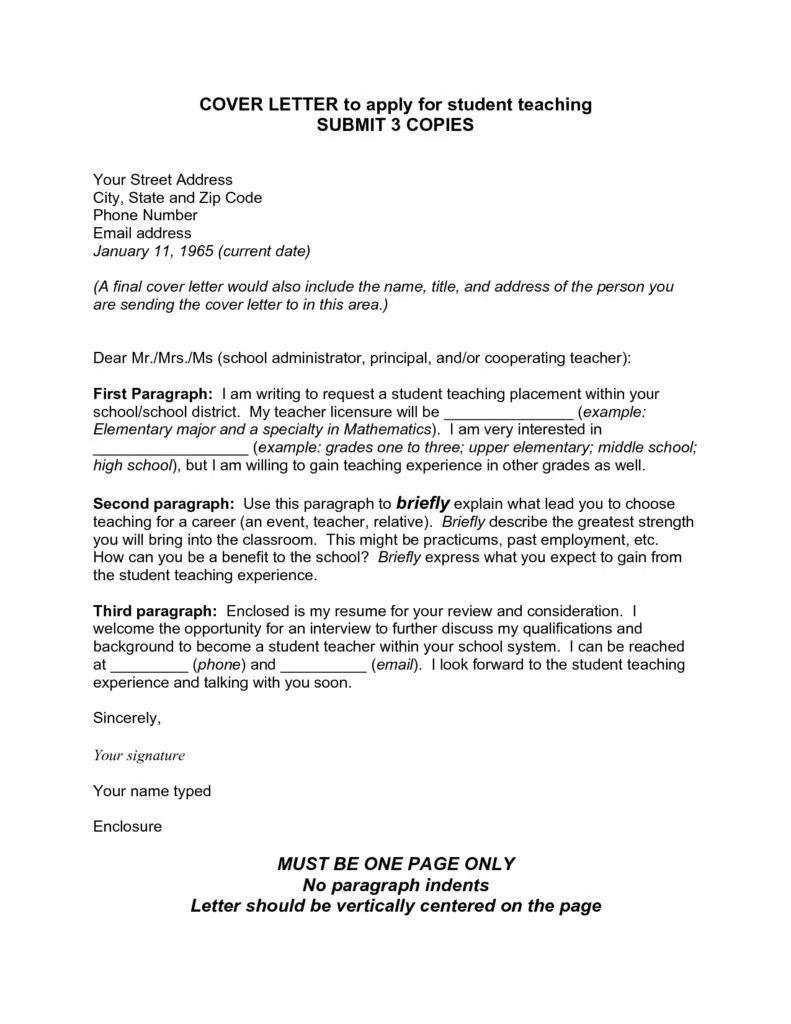
The opening paragraph should grab the reader’s attention. State the position you are applying for and where you saw the job posting. Briefly mention why you are interested in the role and what you can offer the company. This is your opportunity to create a strong first impression. Keep it concise and enthusiastic. Your opening should entice the hiring manager to read the rest of your letter. Make sure that you get them hooked from the start of the letter.
Body Paragraphs
The body paragraphs are where you highlight your skills, experience, and accomplishments. Use specific examples to demonstrate how your qualifications align with the job requirements. Address the key skills and experiences outlined in the job description. Use action verbs to describe your accomplishments and quantify your achievements whenever possible. This is where you show the employer what value you can bring to their company. Try to address the most important details first, and follow with the less relevant information. Always customize the details to the job requirements. This is also your chance to elaborate on why you are the best candidate.
Closing Paragraph
In the closing paragraph, reiterate your interest in the position and thank the hiring manager for their time and consideration. Express your enthusiasm for the opportunity and state that you are available for an interview. You can also mention how you will follow up (e.g., “I will follow up with you in a week”). End on a positive and confident note. A strong closing paragraph reinforces your value and leaves a lasting impression. Make sure to keep it concise and to the point, without being repetitive.
Sign-Off
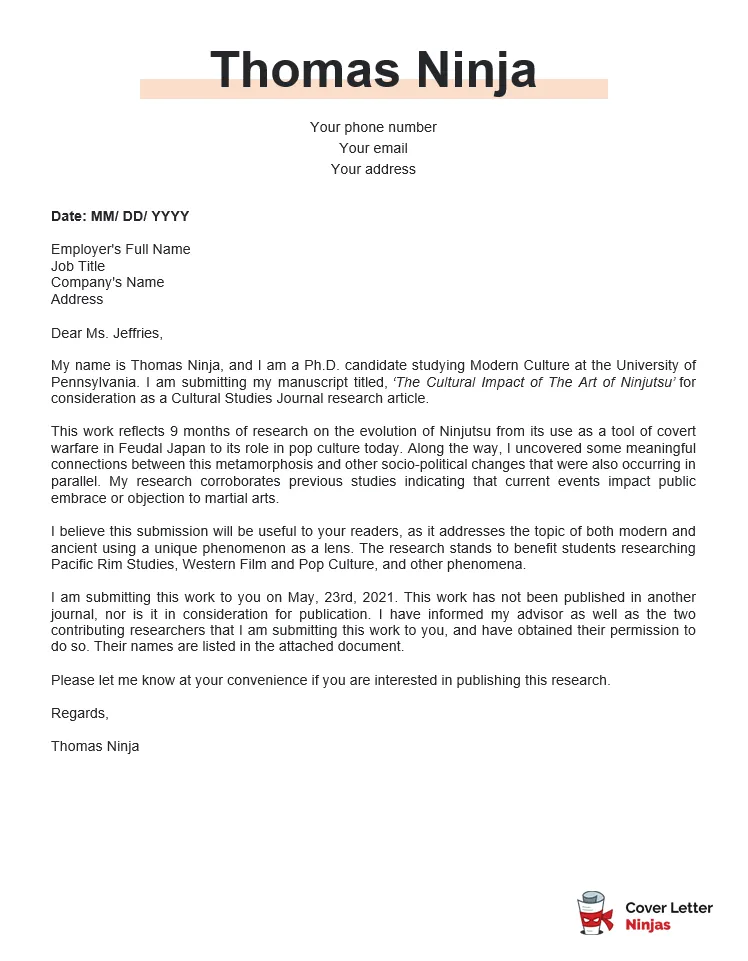
Use a professional sign-off at the end of your cover letter. Common examples include “Sincerely,” “Best regards,” or “Yours sincerely.” Avoid informal closings like “Thanks” or “Cheers.” Your sign-off should be appropriate for the level of formality required by the job and the company culture. Leave space for your handwritten signature if you are printing the letter. A professional sign-off completes your cover letter and adds a final touch of professionalism. It will also set the tone for your interview if you get one.
Formatting and Design
Font and Font Size
Choose a professional and readable font, such as Times New Roman, Arial, or Calibri. Keep the font size between 10 and 12 points. Avoid using overly decorative or unconventional fonts. Select a font that is easy on the eyes and ensures your letter is easy to read. The font should be consistent throughout the entire document. Make sure it has a high legibility for maximum understanding of the message. The hiring manager will appreciate the easy reading experience.
Margins and Spacing
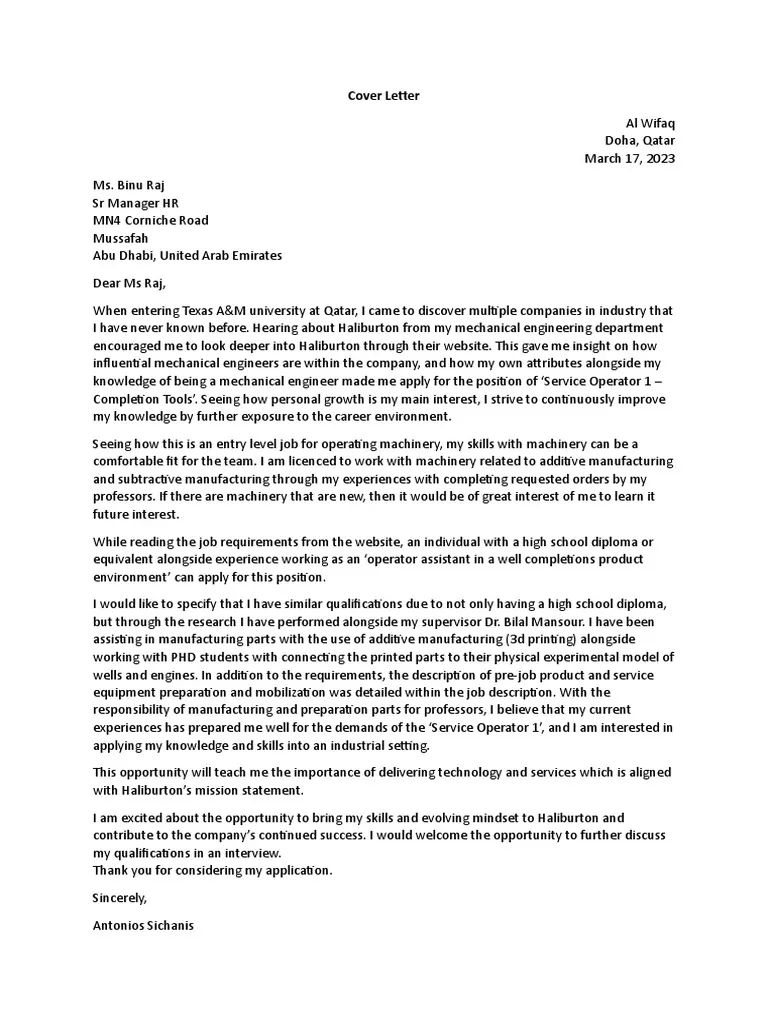
Use standard one-inch margins on all sides of your cover letter. Use single or 1.15 line spacing to make your letter visually appealing and easy to read. Proper formatting helps to create a clean and organized appearance. Avoid using excessive white space. The formatting of the page has to reflect the overall professionalism. Proper spacing is important for readability, so it will make the letter more appealing.
File Format and Naming
Save your cover letter as a PDF to preserve the formatting and ensure it looks the same on all devices. Name your file with your name and the job title or company. For example, “JaneDoe_CoverLetter_MarketingManager.pdf”. This makes it easy for the hiring manager to identify your application. It also shows that you are organized. A properly named file enhances the overall impression of your application and shows that you pay attention to detail. It will also help you stay organized.
Additional Tips for Success
Use Action Verbs
Use strong action verbs to describe your accomplishments and responsibilities. Action verbs such as “managed,” “led,” “developed,” “achieved,” and “improved” help create a dynamic and compelling narrative. They also show the impact of your contributions. Avoid passive language. Instead, use active verbs to highlight your skills and experience. This makes your cover letter more engaging and demonstrates your ability to take initiative. Action verbs will make your cover letter more alive and enhance your chances.
Quantify Your Achievements
Whenever possible, quantify your achievements with numbers and data. For example, instead of saying “Increased sales,” say “Increased sales by 15% in six months.” Quantifiable results provide concrete evidence of your accomplishments and demonstrate your impact. Provide specific metrics that show the positive results you have achieved in previous roles. This will make your achievements more compelling and provide valuable evidence. Quantifying your achievements will also help employers to be more confident in you.
Follow Up
If you haven’t heard back within a reasonable timeframe (usually one to two weeks), consider following up. Send a brief email to the hiring manager or recruiter to reiterate your interest in the position. Mention that you are enthusiastic about the opportunity and reiterate your qualifications. Express your desire to learn more about the role. This shows your proactive approach and genuine interest in the job. This will put you on the top of the recruiters. Make sure your follow-up is polite and professional.
